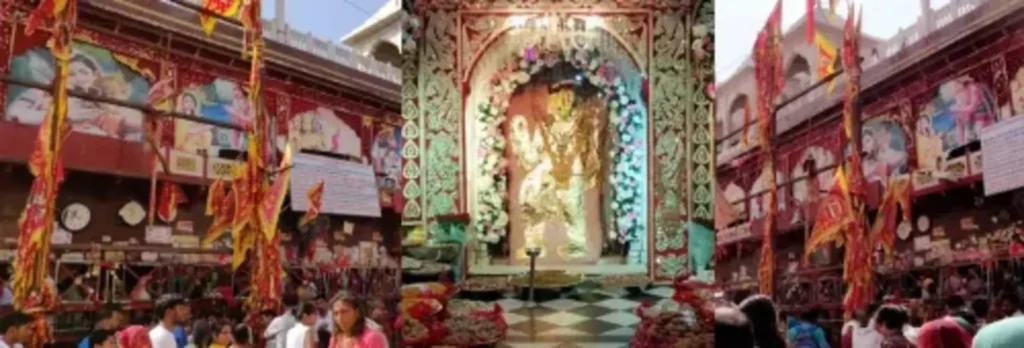
Mehandipur Balaji Temple: A Sacred Pilgrimage Site in Rajasthan
Mehandipur Balaji Temple, located in the Dausa district of Rajasthan, India, is a renowned Hindu temple dedicated to Lord Hanuman, who is revered here as Balaji. This temple is famous for its spiritual significance and its unique practices related to the worship of Hanuman, especially in the context of spiritual healing and protection against negative energies.
Historical and Spiritual Significance
Mehandipur Balaji Temple is known for its distinct religious practices and its reputation as a place where devotees come for spiritual healing. The temple is dedicated to Lord Hanuman, a deity known for his strength, devotion, and protection. The temple’s significance is amplified by the belief in its power to offer relief from various afflictions, including spiritual and psychological distress.
Key Highlights of the Temple’s Significance:
Worship of Lord Hanuman: In Mehandipur Balaji Temple, Lord Hanuman is worshipped in his form as Balaji, representing his protective and healing aspects. Devotees believe that worshipping Balaji here can help in overcoming various difficulties and negative influences.
Healing Practices: The temple is renowned for its practices related to spiritual and psychological healing. Many devotees come seeking relief from problems believed to be caused by negative energies, such as evil spirits or personal afflictions.
Spiritual Rituals: The temple is famous for its specific rituals and ceremonies aimed at spiritual purification and healing, which include offerings, prayers, and special rites performed by the temple priests.
Architectural Features
Traditional Design:
- The Mehandipur Balaji Temple features traditional Rajasthani temple architecture, characterized by its simplistic yet functional design. The structure is modest, focusing on creating a space conducive to worship and healing.
Main Sanctum:
- The central sanctum houses the idol of Lord Hanuman, known as Balaji. The deity is depicted in a powerful and dynamic pose, symbolizing strength and protection. The sanctum is the focal point of worship, where devotees offer prayers and seek blessings.
Ritual Spaces:
- The temple includes specific areas designated for performing rituals and ceremonies. These spaces are used for the various healing and purification practices associated with the temple.
Pillared Hall:
- The temple features a pillared hall where devotees gather for communal prayers and rituals. The hall serves as a space for collective worship and participation in temple activities.
Religious Practices and Festivals
Daily Rituals: The Mehandipur Balaji Temple conducts daily rituals, including poojas (prayer ceremonies) and offerings to Lord Hanuman. Devotees visit the temple to participate in these rituals, which are believed to bring blessings and protection.
Major Festivals: The temple celebrates major Hindu festivals with special significance, including:
- Hanuman Jayanti: The festival marking the birth of Lord Hanuman, celebrated with elaborate rituals, prayers, and processions.
- Diwali: The festival of lights, during which the temple is decorated, and special prayers are performed.
- Ram Navami: The festival celebrating the birth of Lord Rama, during which Lord Hanuman’s role as a devoted servant is especially honored.
Healing Rituals: The temple is particularly known for its specific rituals aimed at addressing spiritual and psychological issues. These rituals often involve unique practices performed by the temple priests.
Practical Information for Visitors
Timing: The Mehandipur Balaji Temple is generally open to visitors throughout the day. Specific timings for rituals and ceremonies may vary, so it is advisable to check with temple officials for accurate information before planning your visit.
Dress Code: Modest attire is recommended when visiting the temple. Visitors should wear clothing that covers the shoulders and knees. Removing shoes before entering the temple premises is required.
Photography: Photography inside the temple may be restricted to maintain its sanctity. It is best to inquire about the rules upon arrival and seek permission before taking photographs.
Respect: Observing respectful behavior is essential when visiting religious sites. This includes maintaining silence during prayers, avoiding disturbances, and following any guidelines set by the temple authorities.
Getting There
The Mehandipur Balaji Temple is located in the Dausa district of Rajasthan, accessible by various modes of transportation:
By Road: The temple is well-connected by road from major cities in Rajasthan. You can travel to Dausa by taxi or bus from cities such as Jaipur (approximately 100 kilometers away) or Agra (about 220 kilometers away). Local transport within Dausa can be used to reach the temple.
By Rail: The nearest railway station is Dausa Railway Station, which is connected to various cities. From the railway station, you can hire a taxi or use local transport to reach the temple.
By Air: The nearest airport is in Jaipur, about 100 kilometers away. From Jaipur, you can travel to Dausa by road.
Mehandipur Balaji Temple in Dausa, Rajasthan, is a significant religious site dedicated to Lord Hanuman. Known for its spiritual and healing practices, the temple attracts devotees seeking relief from various afflictions and seeking the protective blessings of Lord Hanuman. With its traditional design and focus on spiritual purification, Mehandipur Balaji Temple offers a unique and meaningful experience for visitors and devotees.
